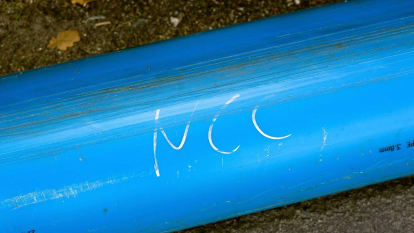Water Main, Karlstad
In a collaboration between Karlstad municipality and NCC, 4,500 metres of water main in a sensitive water and nature conservation area has been renewed. A combination of trench-free slip lining, specially designed PE pipes and careful planning makes it possible to take unique environmental considerations into account.
For some time, Karlstad municipality had experienced problems with leaks in a 10 km stretch of water main between the Sörmon waterworks and Karlstad city centre. It was not immediately obvious which method of repair should be chosen: the pipe had a large diameter and would be laid in a sensitive environment. For this reason, the municipality chose to tender the work in close collaboration/partnership, which made it possible to discuss the solution and choice of method at an early stage.
Irreplaceable environmental value
The water main that was to be replaced runs through a water protection area and a nature reserve of significant geological value. Here, water is purified by means of infiltration into the layers of sand, meaning that clean groundwater can be distributed by the Sörmon waterworks. Any waste from a machine could reach the groundwater within only a few hours and even very small quantities of diesel could affect the taste of several million cubic metres of water. The nature reserve is important for outdoors activities and the area is home to an endangered sand lizard. The environmental aspect was one of the most important considerations of the project. By opting for a trench-free method, which has the least natural impact, the amount of transport could also be minimised.
Drastically fewer machine hours
Thanks to the trench-free slip lining, noise, transport, disturbance and environmental encroachments could be minimised – not to mention the savings made in terms of both time and money. The total number of machine hours for the trench-free renewal of 4,500 metres of pipe was approximately 2,700 hours. This compares to approximately 17,200 hours that would be required to perform the same work using traditional trenches.
In order to meet the challenges posed by the 650 mm internal diameter and the PN 10 pressure class, NCC had to specially design the new pipe and install it in lengths of up to 400 metres in order to minimise the number of trenches and machines on-site. Those few machines that were used utilised special absorbent mats, to prevent any leakage of pollutants. The environmental rescue station, which for safety reasons followed the team, never had to be used.
Trench-free methods tend to be particularly suitable when working in urban environments. This project shows that they are also excellent choices in sensitive natural areas.
